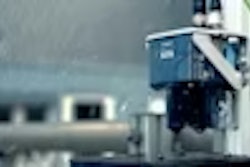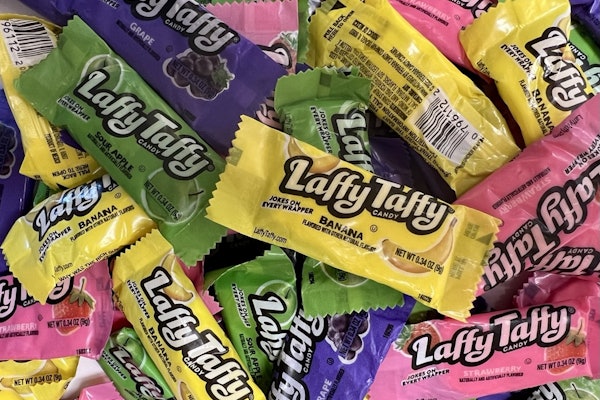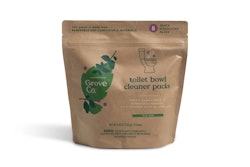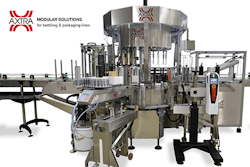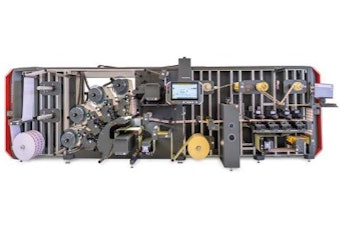Each year the editors at PMMI Media Group roam the aisles of PACK EXPO looking for the next big thing in the packaging sector. Of course, with a show this size it’s never one big thing we find but rather a multitude of things big, medium, and small, all of them innovative and meaningful in one way or another to packaging professionals of today.
This report sums up what we found in six main categories. We present them here for your review knowing full well that, inevitably, we missed a few. Probably more than a few. That’s where you come in. Let us know what we missed and we’ll look into it. Or at the very least, we’ll know to be on the lookout for it at the next PACK EXPO.
Our report comes to you from the following:
Matt Reynolds, Editor, Packaging World
Pat Reynolds, VP Editor Emeritus, Packaging World
Anne Marie Mohan, Senior Editor, Packaging World; Editor, Contract Packaging
Stephanie Neal, Senior Editor, Automation World; Editor-in-Chief, OEM
Joyce Fassl, Editor-in-Chief, ProFood World
Maya Norris, Managing Editor, ProFood World
Natalie Craig, Managing Editor, OEM
Jim Butschli, Editor, Healthcare Packaging
Keren Sookne, Director of Editorial Content, Healthcare Packaging
ROBOTICS
If PACK EXPO is any indicator, collaborative robots, or cobots, are increasing their impact on packaging systems. It used to be that robots on the show floor had to be given a wide berth. It’s still a little surprising to see these cobots free of any enclosure, where attendees are free to interact with them. Ongoing shortages in skilled labor maintain the drumbeat toward not only automation, but automation designed to work seamlessly with existing operators. It’s more than a little ironic that just as cobots seem to be reaching an adoption threshold, we’re saying goodbye to the now-shuttered Rethink Robotics and its Baxter, the cobot that gave this segment such a boost in the early days.
Piab used PACK EXPO to introduce its piCOBOT (1) end-of-arm (EOAT) vacuum tool designed specifically for the cobot market. The piCOBOT offers Universal Robotics’ certified plug-and-play extensions to the latest collaborative robots.
“piCOBOT® weighs only 18 oz and the gripper only adds another 7.40 oz. This provides maximum payload capacity for the cobot,” says Josef Karbassi, Vice President of Piab’s Automation Division. “Strong for its size, piCOBOT is able to lift objects weighing up to 15.5 lb. We have selected features that enable energy-optimized and safe operation to make piCOBOT a genuinely flexible and user-friendly cobot end-of-arm-tool.”
Offered as a development kit, piCOBOT® comprises a vacuum pump unit, a gripper unit, and two suction cups. The standard kit includes four different sets of suction cup models suitable for a variety of tasks, but customers can also choose freely from the company’s range of suction cups for more tailored solutions.
TRAY SEALING
SencorpWhite’s CeraTek line of medical device tray sealers, also displayed at PACK EXPO, integrate with a Universal Robots collaborative robot. Beyond demonstrating the collaborative potential of robots like the UR model, the tray sealer itself is 100% validatable and calibratable. The MD Series sealers include standard features such as PLC control system with touch-screen HMI; short cycle indicator; high/low temperature alarm; high/low pressure alarm; resettable cycle counter; external output ports (temperature, pressure, and dwell time) for process control verification and calibration; and key switch lockout features to limit access to the set-up screens. The units are ISO 11607 compliant and CE compliant. Sample IQ/OQ protocol documents are available with standard models.
SIX-AXIS COBOT
Also highlighted at PACK EXPO was the FANUC CR-15iA collaborative robot. The lean green machine is capable of lifting 15 kg, filling the gap between FANUC’s smaller CR-4iA and CR-7iA siblings and larger big brother, the CR-35iA.
The six-axis robot is a good fit for warehouse, shipping, and other industrial applications that require handling, machine tending, inspection, and logistics. It is also efficient, including a single highly-sensitive sensor in its base vs. multiple external sensors that are often the norm with other cobots, the company said.
The CR-15iA has a small footprint that has a maximum vertical reach of 2.413 mm and a horizontal extension of 1.441 mm. The design makes it ideal for being mounted upright or inversely on the wall, as no safety fences are required since it stops safely on contact with a human operator.
It also includes a FANUC Teach Pendant that enables easy programming coupled with the R-30iB Plus controller’s new iHMI interface. Plus, an optional FANUC Hand Guidance system means any user can program the robot simply by leading it through the motion points or trajectory necessary to complete the task and recording the path.
Among the first packaging machinery OEMs to integrate this new FANUC cobot is Gebo Cermex, which used PACK EXPO to unveil its CoboAccess_Pal M(edium). A mobile palletizer (2), it has two modes of operation, medium speed in a purely cobotic mode and high speed in robotic mode. A dual-station palletizer and depalletizer, the CoboAccess_Pal M is a robust, industrial cobotic palletizer with a payload of up to 15 kg. Using FANUC PalletPRO software, CoboAccess_Pal M only needs inputs of the cases’ dimensions and the pallet’s size to achieve any desired pallet configuration. The system also includes a pallet detection system and a 15-in. HMI.
NEW ALLIANCE
In an effort to expand its offerings in innovative automation, Omron robot is the result of an alliance between Omron and Techman Robot Inc., in which Omron will globally market and sell the robot through Omron’s worldwide distribution network. The co-branded cobot (3) was on display at PACK EXPO International, where the company was highlighting key products that support Omron’s vision of the factory of the future, including autonomous, self-navigating vehicles for fast-paced environments and a traceability demo that uses its barcode reading, verification, machine vision, and data connectivity products to minimize the impact of recalls and maximize productivity by providing real-time data on all supplier materials, machinery, operators, and processes involved in production.
To that end, the TM robot has been added to the Omron portfolio to aid in the creation of an intelligent manufacturing environment where humans and machines work in harmony. The biggest advantage of the TM cobot is that it is simple to program and has built-in vision, which allows for quick start-ups and rapid changeovers, company officials say.
“One of the things that we are excited about with this one is the integrated vision that makes it even more flexible,” says Keith Kersten, Omron’s Marketing Manager. “It’s easy to set up and it’s easy to use in different types of applications.”
The cobot can be set up without using software, Kersten says, but there is software available that provides a flowchart-based intuitive programming interface that requires little to no robot programming experience. The TM series also conforms to safety requirements for industrial robots ISO10218-1 as well as safety requirements for collaborative industrial robots ISO/TS15066.
TM is available in different sizes for use with a variety of applications, which makes it a nice addition to Omron’s line of industrial and mobile robots.
See the Omron TM series in action in a video here: pwgo.to/3964.
‘MINI-ME’ OF COBOTS
At the Yaskawa Motoman booth, the company exhibited what it says is the smallest and lightest-weight six-axis robot in the industry—the MotoMini (4).
The “Mini-Me” of the collaborative robots market, the petite MotoMini weighs just 7 kg, which facilitates transportation and installation and makes it ideal for tabletop-, floor-, ceiling-, tilt-, or wall-mount installations. The ultra-compact design enables installation in factories with high-density layouts, and the compact footprint of 191 x 124 mm allows the cobot to be mounted close to workpieces and other machinery in existing lines or cells.
According to Dean Elkins, Segment Leader – Material Handling for Yaskawa America Inc., Motoman Robotics Division, the robot is equipped with the highest acceleration in a small-sized robot, making it 20% faster than comparable small robots to reduce cycle time and increase production output. The cobot’s 0.5-kg payload supports a variety of tooling and sensors to fulfill diverse project needs.
The MotoMini is recommended for applications such as assembly, dispensing, inspection, kitting, machine tending, material handling, packaging, parts feeding, sorting, and STEM Education. “Usually with a SCARA robot, parts need to be flat,” explained Elkins during a demo of the robot. “The MotoMini can pick products that are upright, which allows for more flexibility in the workspace. For example, it could pick ampoules.”
The robot is designed with cables and air lines that are routed through the robot base to the upper arm to increase cable life, enhance safety, and reduce teaching time, while a single power and control cable reduces wiring time and improves cable reliability. As an added benefit, the MotoMini features an extremely quiet operation with less than 65 dB, with maximum load and speed.
The cobot is controlled by Yaskawa’s new ultra-compact YRC1000micro robot controller, which can be installed vertically, horizontally, or mounted in a standard 19-in. equipment rack. Watch a video of the company’s new Smart Pendant tablet-based robot programmer with the MotoMini at pwgo.to/3965.
COBOT FOR MAP BREAD
Traveling to Australia not long ago, JLS Automation President & CEO Craig Souser noted that MAP packaging for fresh bread was nearly ubiquitous there. Considering the growing consumer trend in the U.S. toward fresh, high-quality artisan breads as well as the push to reduce food waste, he envisioned a robotic system that could help create such packaging here.
Introduced at the show, JLS’s new system (5) combines custom end-of-arm-tooling with the company’s Talon® hygienic pick-and-place robot to load sliced, fresh bread into a thermoformer. MAP packaging, says Souser, can extend the product’s shelf life up to six months, with the bread remaining as fresh as the day it was packed. “Because of the desire for extended shelf life with no preservatives associated with the product and increased demand in the U.S., this new tool and capability now fills a need for higher-end product producers,” he says.
As Souser explaines, the real innovation is in the way the bread is handled. A conveyor with special guides ensures the sliced loaves are transported gently and presented to the Talon efficiently and intact.
The Talon is designed with the highest level of sanitation for food packaging and features four levels of sanitary construction, pick belts with a motorized roller, conveyor stand-offs that help prevent product build-up, a tool-less belt lifting mechanism, and non-existent welds for easy, washdown cleaning. An IP69K-rated stainless-steel construction, sloped surfaces, and control box for run-off as well as a standard open frame design allow for easy cleaning, access, inspection, and maintenance.
NEW SCARA ROBOT
Manufacturers are looking for new ways to automate tasks in the factory without adding too much cost or complexity. With ease of use and added capabilities in mind, Epson Robots rolled out a new model in its T-series line of SCARA robots, as well as a force control guidance system for high precision parts placement.
First, the Synthis T6 SCARA robot, announced at PACK EXPO International, is ideal for simple applications such as pick and place, assembly, parts handling, and dispensing applications in industries ranging from automotive and medical development to lab automation, consumer electronics, and electronic components. The design includes a built-in controller housed in the robot base and power for end-of-arm tooling. It runs at 110V or 220V and requires no encoder battery, minimizing factory downtime for maintenance.
The biggest differences between the T6 and its predecessor, the T3—announced at PACK EXPO Las Vegas last year—is the payload and reach. The T3 has a payload of up to 3 kg while the T6 can handle payloads of up to 6 kg, and it has an extended reach of up to 600 mm. In addition, the T6 includes multi-headed tooling, which means more throughput.
“The T3 has one ‘hand’ attached to pick things up with. The T6 can have two hands to pick up and place two things,” says Rick Brookshire, Group Product Manager for Epson Robots. That means, “it can do things in half the time.”
This is all delivered for less than $10,000 as an alternative to expensive and complex slide-based offerings. The T6, which is available now, is priced at $9,495. It installs in minutes and virtually eliminates any space-constraint issues, the company says.
“The T6 is another powerful, low-cost automation solution designed for easy integration, which helps lower the total cost of ownership versus current products for manufacturers and system integrators,” says Gregg Brunnick, Epson Robots’ Director of Product Management. “Since it includes the same intuitive Epson RC+ software and powerful features we incorporate in our high-end robots, we are giving users both the power and simplicity required for their applications.”
In a separate announcement at PACK EXPO, Epson unveiled its new high-performance forced guidance system, called Force Guide. Powered by the company’s Quartz technology and sensors, it works with all Epson robots, except the T series, allowing them to sense and make moves using force feedback data. It can detect six axes of force down to 0.1 N, delivering fast, tactile feedback to guide robots for high-precision parts placement. Designed for easy configuration and set up, Force Guide features a point-and-click interface with pre-configured solutions and built-in objects, reducing the development time for applications that require high precision.
“Force Guide is a revolutionary force-control system that is opening up possibilities for robot automation in areas that were not possible before,” says Brunnick. It is perfect for tasks such as part insertion, screw driving, grinding/polishing and more.
For example, if a pin needed to be placed inside a hole, Force Guide can “feel” its way in, probing with force sensing that is incredibly light so that it can work with delicate parts. It can also be used for things like polishing by training it to hold to a surface even around a contour.
“Instead of a closed loop on position, it’s a closed loop on force,” Brookshire says.
EASE OF PROGRAMMING
Staubli robots, known for use in food and medical processing and packaging as well as automotive, aerospace, and energy, is extending its programming ability. The company’s robots are based on proprietary controllers. However, Staubli has a robotic software driver, called uniVAL plc, that allows any of its robots to be programmed directly by an industrial PLC.
During PACK EXPO International, the company announced that its uniVAL plc now works with Rockwell Automation controllers.
“The purpose of connecting to Rockwell is to allow more people to be capable of programming it,” says Sebastien Schmitt, Staubli’s Division Manager for North America. “Everyone is looking for ease of use, faster programming, and to maintain knowledge in-house to get the most out of a product. This tool means they can program our equipment with something they already know,” he says, noting that many engineers are already familiar with Rockwell PLCs.
The capability was on display with a TP80 fast-picker robot. Designed for small and light parts, the TP80 is extremely fast and well-suited for food, pharma, photovoltaics, and cosmetics applications, the company says. Also at the show, the company displayed its Stericlean series robots which are designed to operate in aseptic production areas. The cleanroom robots, which come in 4-axis and 6-axis, were simulating the picking and placing of a glucose meter in a sealed, hygienic environment, an example of packaging medical devices in a germ-free, controlled environment.
To learn more about what was shown at PACK EXPO International read the in-depth articles:
https://www.packworld.com/article/pack-expo-international-2018-innovations-report
https://www.packworld.com/article/report-innovative-new-materials-pack-expo
https://www.packworld.com/article/report-innovative-new-controls-pack-expo
https://www.packworld.com/article/report-innovative-new-e-commerce-pack-expo
https://www.packworld.com/article/report-innovative-new-pharmaceutical-pack-expo
TRAY SEALING
SencorpWhite’s CeraTek line of medical device tray sealers, also displayed at PACK EXPO, integrate with a Universal Robots collaborative robot. Beyond demonstrating the collaborative potential of robots like the UR model, the tray sealer itself is 100% validatable and calibratable. The MD Series sealers include standard features such as PLC control system with touch-screen HMI; short cycle indicator; high/low temperature alarm; high/low pressure alarm; resettable cycle counter; external output ports (temperature, pressure, and dwell time) for process control verification and calibration; and key switch lockout features to limit access to the set-up screens. The units are ISO 11607 compliant and CE compliant. Sample IQ/OQ protocol documents are available with standard models.
SIX-AXIS COBOT
Also highlighted at PACK EXPO was the FANUC CR-15iA collaborative robot. The lean green machine is capable of lifting 15 kg, filling the gap between FANUC’s smaller CR-4iA and CR-7iA siblings and larger big brother, the CR-35iA.
NEW ALLIANCE
In an effort to expand its offerings in innovative automation, Omron robot is the result of an alliance between Omron and Techman Robot Inc., in which Omron will globally market and sell the robot through Omron’s worldwide distribution network. The co-branded cobot (3) was on display at PACK EXPO International, where the company was highlighting key products that support Omron’s vision of the factory of the future, including autonomous, self-navigating vehicles for fast-paced environments and a traceability demo that uses its barcode reading, verification, machine vision, and data connectivity products to minimize the impact of recalls and maximize productivity by providing real-time data on all supplier materials, machinery, operators, and processes involved in production.
‘MINI-ME’ OF COBOTS
At the Yaskawa Motoman booth, the company exhibited what it says is the smallest and lightest-weight six-axis robot in the industry—the MotoMini (4).
COBOT FOR MAP BREAD
Traveling to Australia not long ago, JLS Automation President & CEO Craig Souser noted that MAP packaging for fresh bread was nearly ubiquitous there. Considering the growing consumer trend in the U.S. toward fresh, high-quality artisan breads as well as the push to reduce food waste, he envisioned a robotic system that could help create such packaging here.
NEW SCARA ROBOT
Manufacturers are looking for new ways to automate tasks in the factory without adding too much cost or complexity. With ease of use and added capabilities in mind, Epson Robots rolled out a new model in its T-series line of SCARA robots, as well as a force control guidance system for high precision parts placement.
EASE OF PROGRAMMING
Staubli robots, known for use in food and medical processing and packaging as well as automotive, aerospace, and energy, is extending its programming ability. The company’s robots are based on proprietary controllers. However, Staubli has a robotic software driver, called uniVAL plc, that allows any of its robots to be programmed directly by an industrial PLC.
















